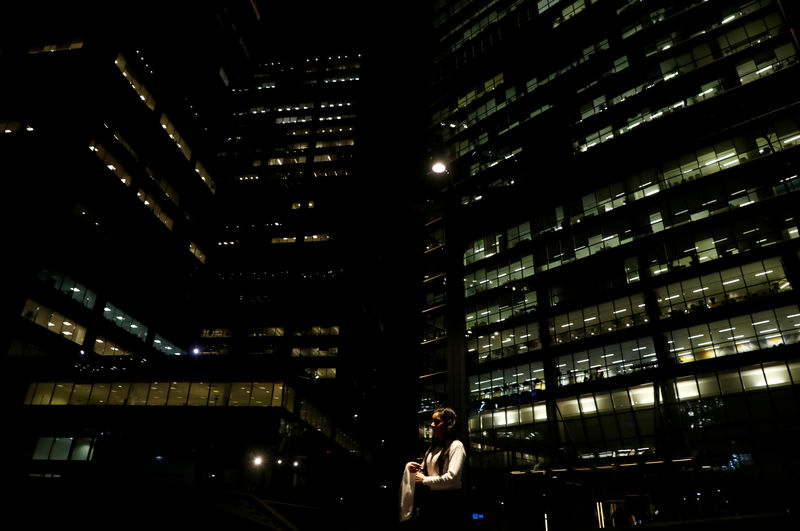 © Reuters. A woman walks in Buenos Aires’ financial district
© Reuters. A woman walks in Buenos Aires’ financial districtBy Walter Bianchi
BUENOS AIRES (Reuters) – Argentina’s peso slipped on Thursday as investors worried that a revised $57 billion program with the International Monetary Fund, which assured the government’s funding until the end of next year, could hurt the ailing economy and leave foreign exchange markets volatile.
As the U.S. Federal Reserve has tighten rates, Argentina has been at the center of turbulence in emerging markets as its economy tipped unexpectedly into recession due to a severe drought.
The peso currency has lost more than 50 percent of its value this year despite the central bank hiking benchmark interest rates to an eye-watering 60 percent.
In an effort to restore investor confidence, IMF Managing Director Christine Lagarde on Wednesday unveiled a record lending package for Argentina that included a further $7 billion in funding versus a previous $50 billion standby facility signed in June.
Crucially, the new package boosted disbursements through the end of 2019 by $19 billion to assuage investor doubts over whether Argentina could pay its foreign debt next year.
However, economists said that a new monetary policy regime enshrined in the deal, which would bring a halt to costly market interventions by the central bank, could lead to volatility in the short term.
The program introduces a trading band for the peso between 34 and 44 pesos, which depreciates daily at a rate equivalent to 3 percent per month. Below that rate, the central bank can sell up to $150 million a day to support the peso – well below the levels often seen this year.
In a research note, Delphos Investment said that although the peso’s exchange rate was much more realistic after its recent depreciation, there were few sellers of hard currency in the market aside from the central bank following recent turbulence and that could lead to price swings.
The peso
“There may be noise and volatility in the short term but we do not see any risk, with the exchange rate already at these levels, that the situation will get completely out of hand,” it said in the report.
Analysts said that new central bank chief Guido Sandleris, who took office on Tuesday after his predecessor unexpectedly resigned, would steer the bank away from regular market intervention and shrink its balance sheet, as requested by the Fund.
The central bank has spent nearly $16 billion in reserves this year in a failed attempt to prop up the peso, using a large share of the dollars disbursed by the IMF so far.
However, economists warned that a switch in central bank policy to targeting zero growth in the monetary base over the next year – instead of using inflation as its main target – could have a contractionary effect on the ailing economy, which is already due to enter recession this year.
Argentina’s monetary base has been growing at more than 2 percent monthly.
“This will imply a very severe liquidity squeeze and monetary contraction in real terms with obvious adverse implications for activity,” said Alberto Ramos of Goldman Sachs (NYSE:).
Economists said President Mauricio Macri faced a challenge in implementing commitments to the Fund to reduce the primary fiscal deficit to zero next year and achieve a 1 percent of GDP surplus in 2020. Macri is expected to seek reelection next year.
“The key still lies in implementation of the government’s fiscal squeeze, which would be one of the largest undertaken by a country in an IMF deal,” Capital Economics wrote in a research note. “The risk of slippage ahead of elections in October 2019 is high.”.
Source: Investing.com

























